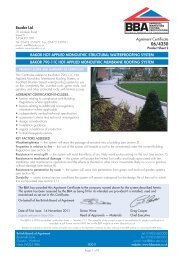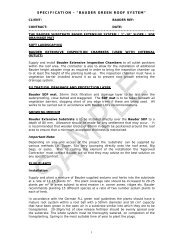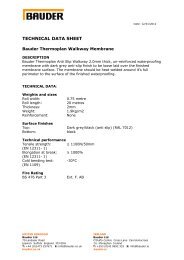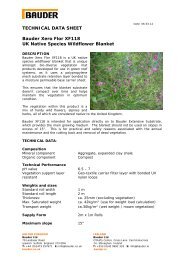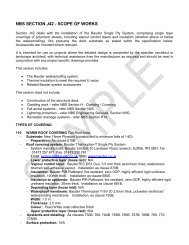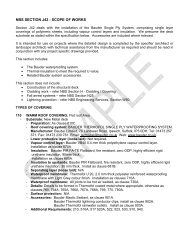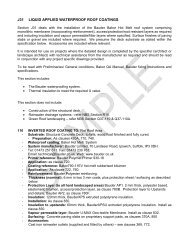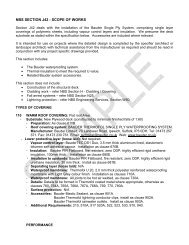The GRO Green Roof Code - SIG Design and Technology
The GRO Green Roof Code - SIG Design and Technology
The GRO Green Roof Code - SIG Design and Technology
Create successful ePaper yourself
Turn your PDF publications into a flip-book with our unique Google optimized e-Paper software.
2<br />
Introduction to green roofs<br />
2.1<br />
Definition<br />
A living or green roof is a roof, deck or other structure onto which vegetation is intentionally grown or<br />
habitats for wildlife are established.<br />
2.2<br />
Types<br />
Traditionally there have been three broad classifications for green roofs - extensive, semi-intensive <strong>and</strong><br />
intensive. However, whilst biodiverse roofs share many of the characteristics of an extensive roof, their<br />
increased specification merits a distinctly separate category:<br />
2.2.1 Extensive green roof<br />
Extensive roofs serve as an ecological covering that provides society with environmental benefits <strong>and</strong> the<br />
building owner with life cycle cost benefits. A lightweight, low-maintenance roof system, typically with<br />
succulents or other hardy plant species (often sedum) planted into a shallow substrate (typically less than<br />
100 mm) that is low in nutrients. Irrigation is not normally required.<br />
2.2.2 Biodiverse roof<br />
A roof that is similar in composition to an extensive roof, but designed specifically to create a habitat that<br />
will attract a particular flora <strong>and</strong> fauna; whether replicating the original footprint of the building or enhancing<br />
the previous habitat. Includes a brown roof, which is a non-vegetated version. <strong>The</strong> growing medium is<br />
purposely-selected to allow indigenous plant species to inhabit the roof over time.<br />
2.2.3 Semi Intensive green roof<br />
An intermediate green roof type that can include characteristics of both extensive <strong>and</strong> intensive roofs.<br />
Typically requiring a depth of substrate between 100 mm to 200 mm, a wider range of plants can be<br />
included, compared to extensive roofs, including shrubs <strong>and</strong> woody plants. Irrigation <strong>and</strong> maintenance<br />
requirements are dependent upon the plant species installed.<br />
2.2.4 Intensive green roof<br />
A version of a green roof, often referred to as a roof garden, that provides benefits akin to a small urban<br />
park or domestic garden. <strong>Design</strong>ed primarily for recreational use, intensive roofs are typically configured<br />
with 200 mm+ of substrate <strong>and</strong> often require regular maintenance <strong>and</strong> irrigation.<br />
2.3 Benefits<br />
<strong>Green</strong>, living <strong>and</strong> intentionally vegetated roofs are becoming more common in the UK. <strong>Green</strong> roofs are one<br />
of the most readily-accessible sustainable technologies available to the construction industry <strong>and</strong> can be<br />
included as part of new buildings <strong>and</strong> (subject to structural checks), retro-fitted to existing buildings to<br />
provide the following benefits to the occupants of buildings, as well as the local setting:




